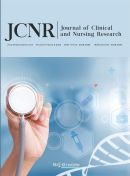Abstract
Objective: To understand the pathogenic bacteria isolated from patients and their drug resistance changes in general ICU of the Affiliated Hospital of Hebei University, so as to provide reference for appropriate selection of antibiotics in clinical practice. Methods: A retrospective investigation was conducted to analyze the bacteriological distribution and drug resistance of nosocomial pathogens isolated from the specimens of hospitalized patients in the comprehensive ICU of the hospital from 2019 to 2021. The US technology BD Phoenix 100 automatic bacterial identification analyzer was used for bacterial identification of the pathogen samples, disk diffusion method was used for drug susceptibility test, and SPSS 22.0 software was used to analyze the trend of drug resistance. Results: A total of 970 strains of nosocomial pathogens were detected in the three years. The main pathogens were Acinetobacter baumannii (133 strains, 13.71%), Klebsiella pneumoniae (106 strains, 10.93%), Pseudomonas aeruginosa (83 strains, 8.56%), Escherichia coli (76 strains, 7.84%) and Enterococcus faecium (69 strains, 7.11%). The resistance rate of Acinetobacter baumannii to antibiotics was high. Klebsiella pneumoniae, Pseudomonas aeruginosa and Escherichia coli had low resistance rates to carbapenems. The situation of bacterial drug resistance is still serious. Conclusion: The drug resistance of pathogenic bacteria collected from Class III Grade A Hospital’s patients to antibiotics was generally high. Therefore, clinical departments should strengthen the inspection of specimens of infection and drug sensitivity test in order to grasp the resistance mechanisms and drug resistance of pathogenic bacteria changes, and select appropriate antimicrobial agents according to the test results. Besides, the formation of drug-resistant strains also needs to be prevented, and the treatment of patients with severe infection needs to be improved.
References
Zhou X, Du G, Li Y, et al., 2018, Detection and Drug Resistance Differences of Multidrug-Resistant Bacteria in ICU and non-ICU Wards. Chin J Control, 17(3): 219–223.
Li L, Liu J, 2020, Distribution and Drug Resistance of Pathogenic Bacteria in Patients with Nosocomial Infection in Intensive Care Unit. Journal of Practical Medicine, 27(4) :478-479.
Li H, Qiu G, 2015, Analysis of bacterial flora distribution and drug resistance in 3391 patients with Icu infection. International Journal of Lab Medicine, 36(17): 2595–2597.
Sun J, Zhang X, Xing M, et al., 2016, Analysis of Multi-Drug Resistant Bacteria in Multi-Center Intensive Care Unit in Shandong Province. Chin J Nosocomiology, 26(11): 2465–2467 + 2616.
Zhang H, Qiu G, Zhai R, 2015, Analysis on the Distribution and Drug Resistance of Pathogenic Bacteria in Patients with Comprehensive ICU Infection. Journal of Clinical Military Medicine, 43(2): 182–185.
Yang YS, Lee YT, Huang Tw, et a1., 2013, Acinetobacter Baumannii Nosocomial Pneumonia: Is the Outcome More Favorable in Non-Ventilated than Ventilated Patients?BMC Infect_Dis, 13: 142.
Shi J, Guo Y, Weng J, et al., 2016, Distribution and Drug Resistance of Non-Fermentative Bacteria in Patients with ICU Infection. Chin J Nosocomiology, 26(17): 3866–3868.
Wang Yi, Xu E, Ji P, et al., 2015, Analysis on the Distribution and Drug Resistance of Pathogenic Bacteria in ICU Patients. Chin J Nosocomiology, 25(15): 3402–3404.
Chong J, Quach C, Blanchard AC, et a1., 2016, Molecular Epidemiology of a Vancomycin-Intermediate Heteroresistant Staphylococcus Epidermidis Outbreak in a Neonatal Intensive Care Unit. Antimicrob Agents Ch, 60(10): 5673–5681. https://www.doi.org/10.1128/AAC.00726-16
Yu J, Pathogen distribution and drug resistance analysis of nosocomial infection in intensive care unit. Practical Journal of Heart, Brain, Lung and Vascular Diseases, 21(9):99.
Ye Y, Wang Y, Shen Z, 2006, National Clinical Laboratory Procedure (Version 3), Southeast University Press, Nanjing, 736–753.
Xu J, 2011, Analysis of Risk Factors and Prognosis of Hospital Acquired Pneumonia After Acute Intracerebral Hemorrhage. Chin J Nosocomiology, 24(21): 5183–5185.
Kohlenberg A, Schwab F, Ruden H, 2012, Wide Dissemination of Extended-Spectrum ?-Lactamase (ESBL)-Producing Escherichia Coliand Klebsiella Spp in Acute Care and Rehabilitation Hospitals. Epidemiol Infect, 140(3): 528–534.
Ge L, Yang W, Luo Y, et al., 2017, Distribution and Drug Resistance of Pathogenic Bacteria in ICU Patients from 2011 to 2015. Foreign Medical Antibiotics, 38(2): 67–71.
Sharma M, Pathak S, Srivastava P, 2013, Prevalence and Antimicrobial Spectrum of Ultra-Broad Spectrum ?-Lactamase (ESBL)-Producing Gram-Negative Bacilli and Molecular Characteristics of ESBL-Producing Escherichia Coli and Klebsiella. L Clin Diagn Res, 7(10): 2173–2177.
Bao L, Peng R, RenX, et al., 2013, Analysis of Several Common Pathogens and their resistance to Antibiotics. Pak JMED Sci, 29(1):135–139.
Lalzampuia H, Dutta TK, Warjri I, et al., 2013, PCR-Based Detection of Ultra Broad-Spectrum ?-Lactams (blaCTX-M-1 and blaTEM) in Escherichia Coli, Salmonella and Klebsiella Pneumoniae Isolates from Pigs in Northeast India (Mizoram). Indian J Microbiol, 53(3): 291–296.
Hu Z, Pan X, Zhou D, et al., 2014, Clinical Distribution and Drug Resistance Monitoring of Klebsiella Pneumoniae Infection. Chinese Journal of Nosocomiology, 24(12): 2865–2866.
